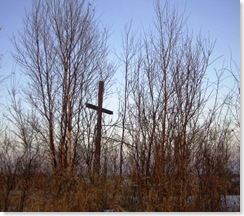Affliction, like the gray bird of Minerva, flies in through a broken window. Pain storms the body’s broken beach. And the mind fails to ward off objectivity and can only wish, jejunely, for being appeared to, darkly.
But Idealism’s refuge is gone. Its dream long ago ended with a shoeless kick at a boulder. "Ideas are not the only reality," says pain…as if this was pain’s job to point out.
The walk of chronic pain is always an eternity of the moment. A step taken is swallowed and never taken. This is pain’s stasis. And stasis’ affliction. In affliction there is no flow, no motion to be true to, and no walk, and no time.
What could produce a budging, a stirring, a movement? Love only, says the teacher, only love.
 Perhaps, when affliction has its say, when the hope for dislodging it is gone, when the lights go out in the tomb and the call to wait is no longer heard–is in fact absurd–then will desire end, and gravity give way to grace, leaving us fallow, and prepared to receive love without filters. Perhaps.
Perhaps, when affliction has its say, when the hope for dislodging it is gone, when the lights go out in the tomb and the call to wait is no longer heard–is in fact absurd–then will desire end, and gravity give way to grace, leaving us fallow, and prepared to receive love without filters. Perhaps.
That interminable pain may be made "use" of, and this, only discoverable personally and existentially, is not, and never to say, that affliction has a "why". Affliction can only be a necessary accident of creation…or God is a monster.
That there may be an embrace of affliction’s necessity through something like obedience or acceptance, and that this may find its terminus in a love encounter, as with Simone Weil, as with John of the Cross, as with Theresa of Avila and Theresa, the Little Flower, well, there’s a mystery.
Love and its mysteries eclipse pain, suffering and affliction. That affliction is recognized as evil is also to say that life has value, is a wonder.
 Suburban suspicions and urban hides are shed and the micro-culture inside becomes largely free of cynicism, workaday rancour and obsessive security. It all seems to be swallowed up in the spacious moody melody of Cat Power, or spun off the hips and hula-hoops animated by the driving Mali-pop rhythm’s of Amoudou and Miriam.
Suburban suspicions and urban hides are shed and the micro-culture inside becomes largely free of cynicism, workaday rancour and obsessive security. It all seems to be swallowed up in the spacious moody melody of Cat Power, or spun off the hips and hula-hoops animated by the driving Mali-pop rhythm’s of Amoudou and Miriam. 

